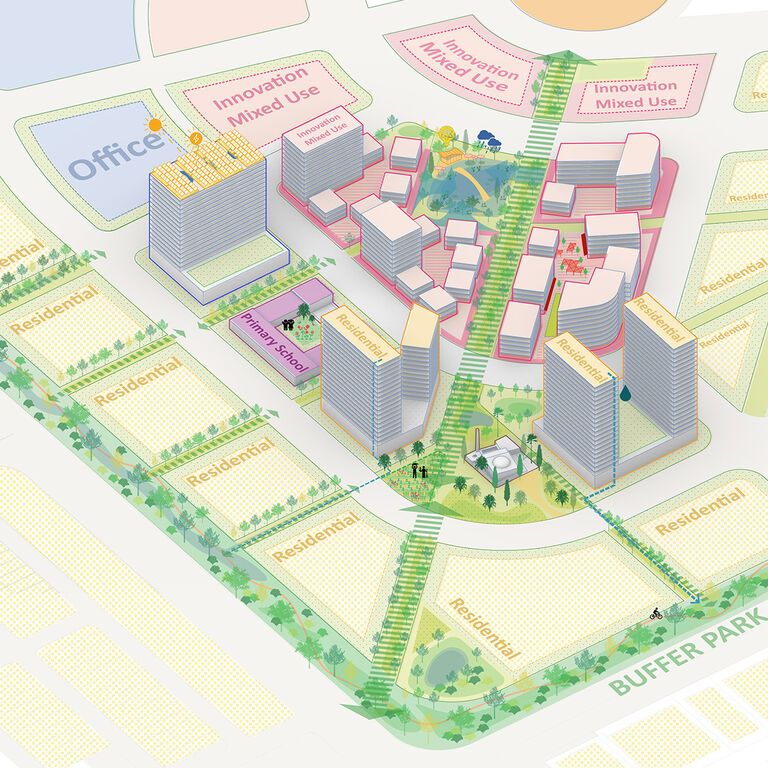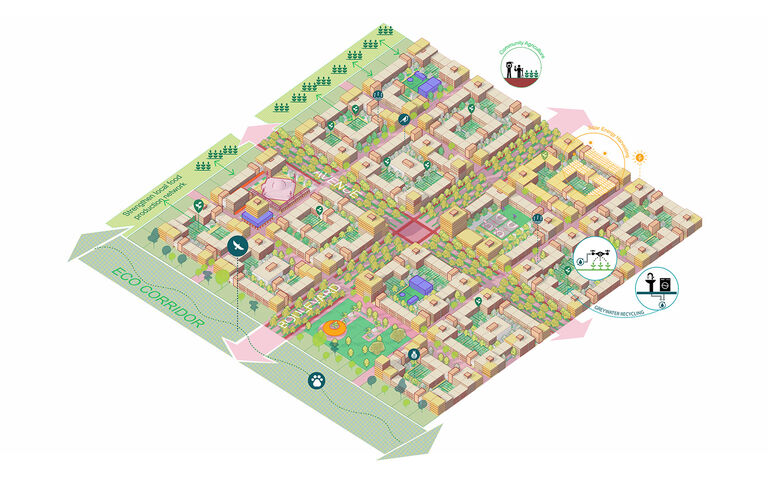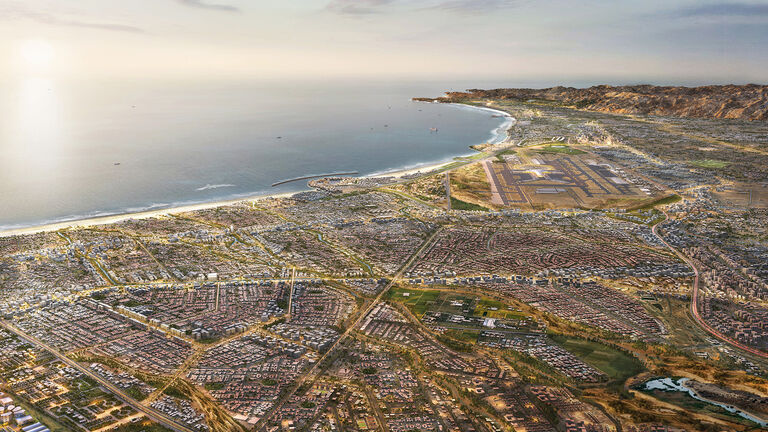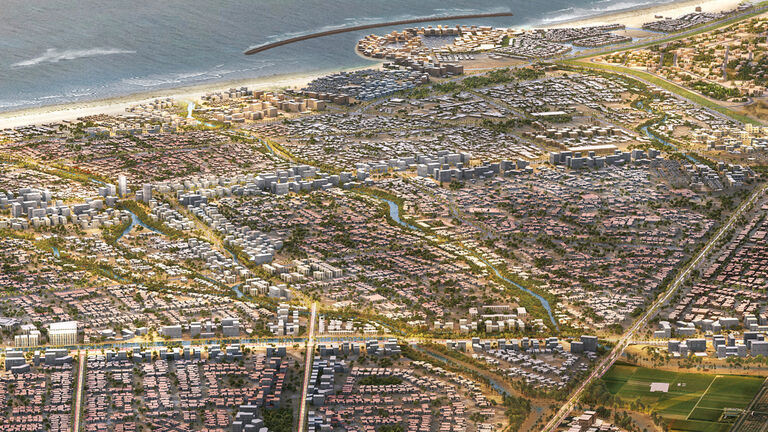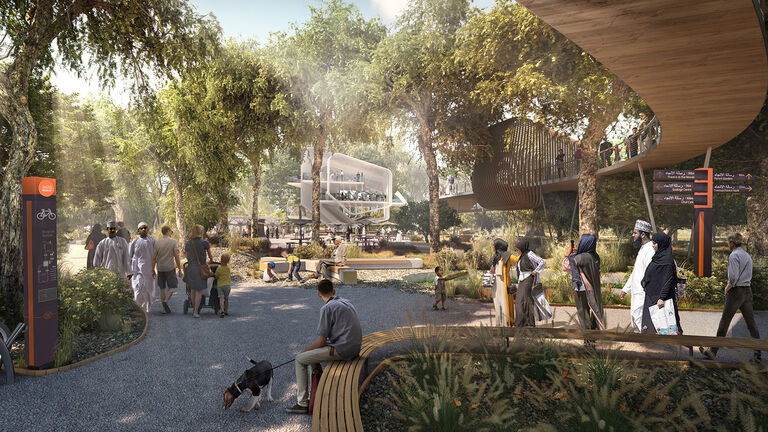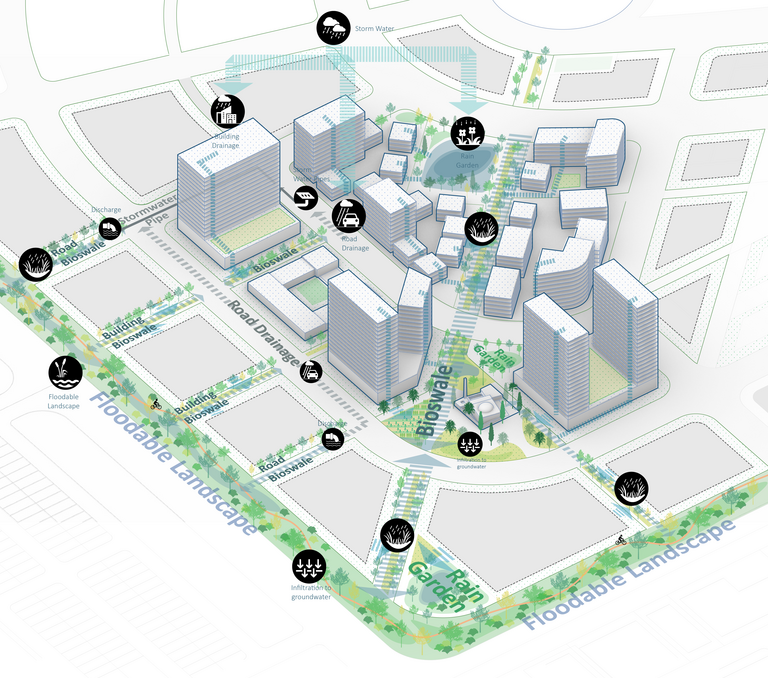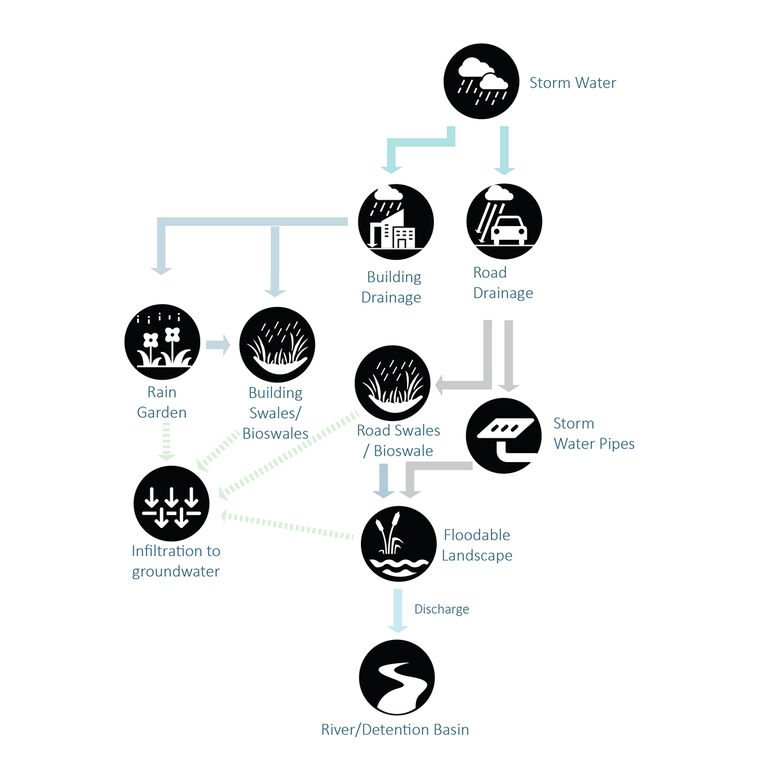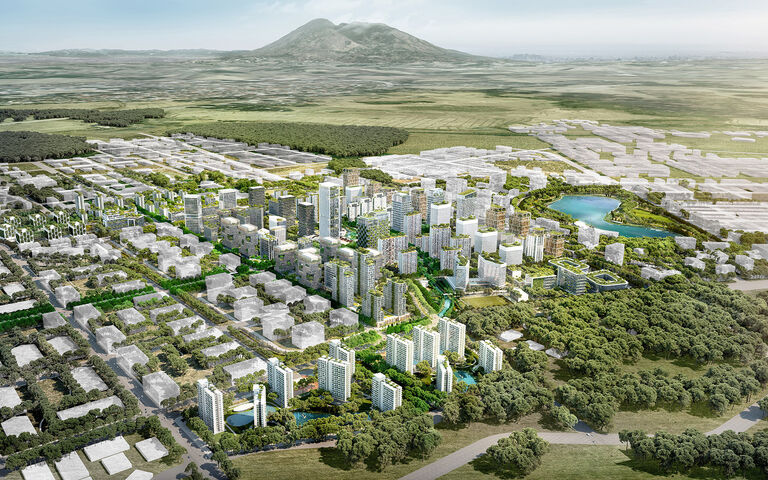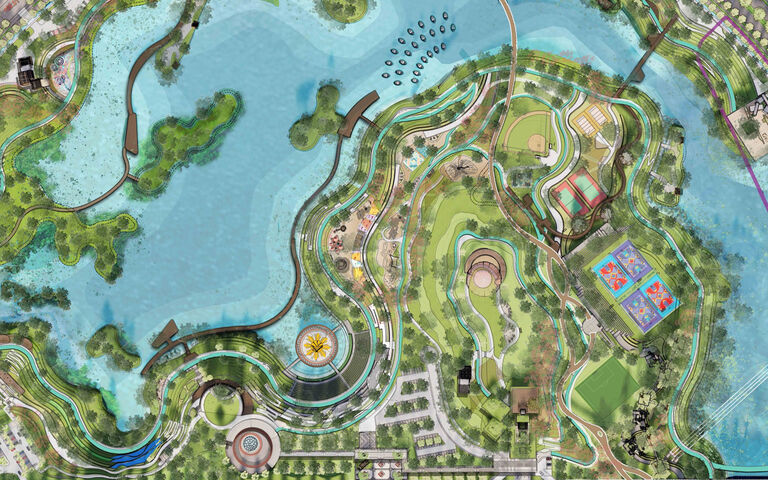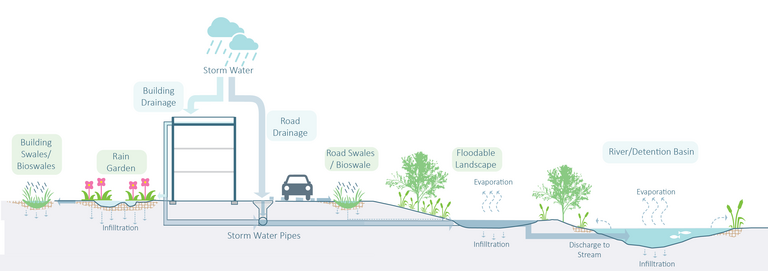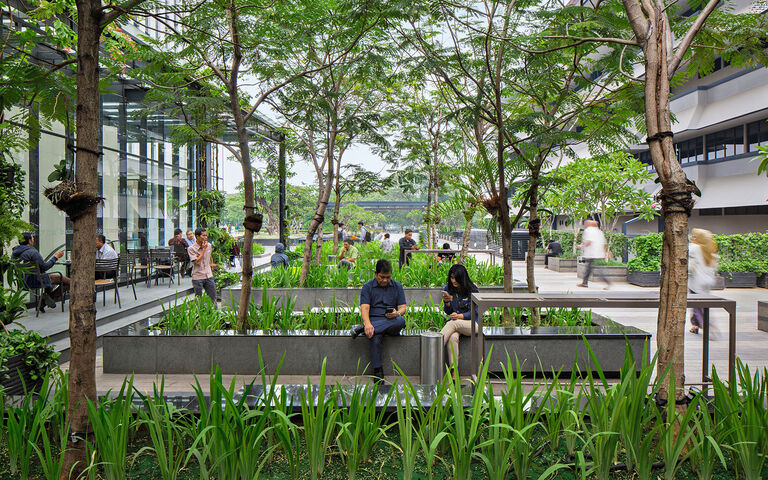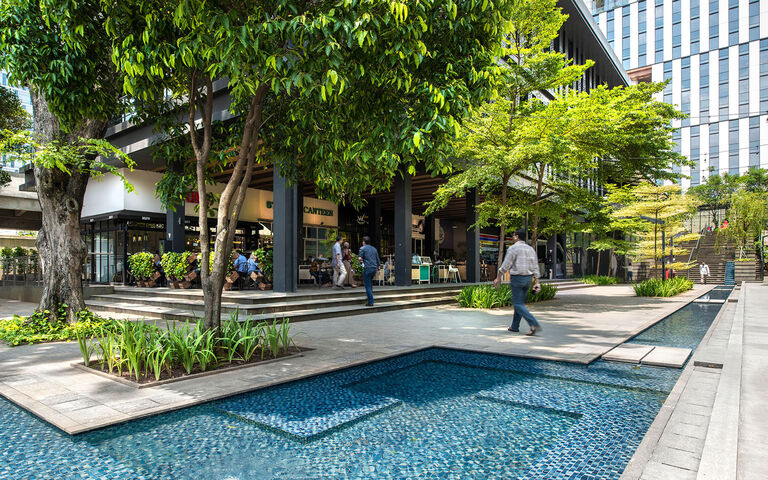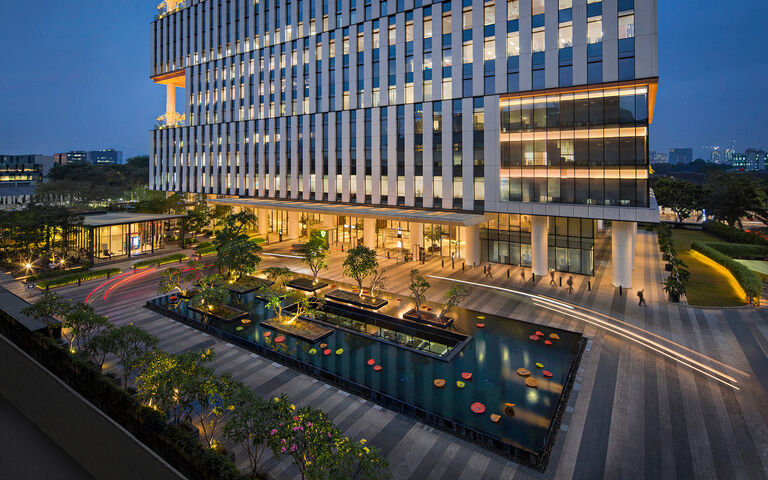The integration of sustainable solutions in masterplanning has recently focused on a trend towards Nature-based Solutions (NbS) and their application within the design process. NbS is a term for a range of approaches that share a fundamental principle: designing in harmony with natural forces, cycles and seasons rather than supervening them.
What are Nature-Based Solutions?
NbS are defined as actions and approaches that “protect, sustainably manage and restore natural or modified ecosystems,” whilst simultaneously supporting human activity and bringing well-being and biodiversity benefits.
They are increasingly recognised as an innovative approach to land and urban development, aiming to enhance resilience. The UN highlights them as robust and resilient, offering high returns in health and economic benefits, and presenting a more sustainable alternative to traditional grey infrastructure.
NbS utilise natural resources like clean air, water and soil to tackle environmental challenges, working with nature rather than against it. In contrast, unsustainable land and resource use contributes to biodiversity loss, increased pollution, deforestation and other negative impacts. They support ecosystems, societies and individuals in adapting to climate change while enhancing quality of life.
